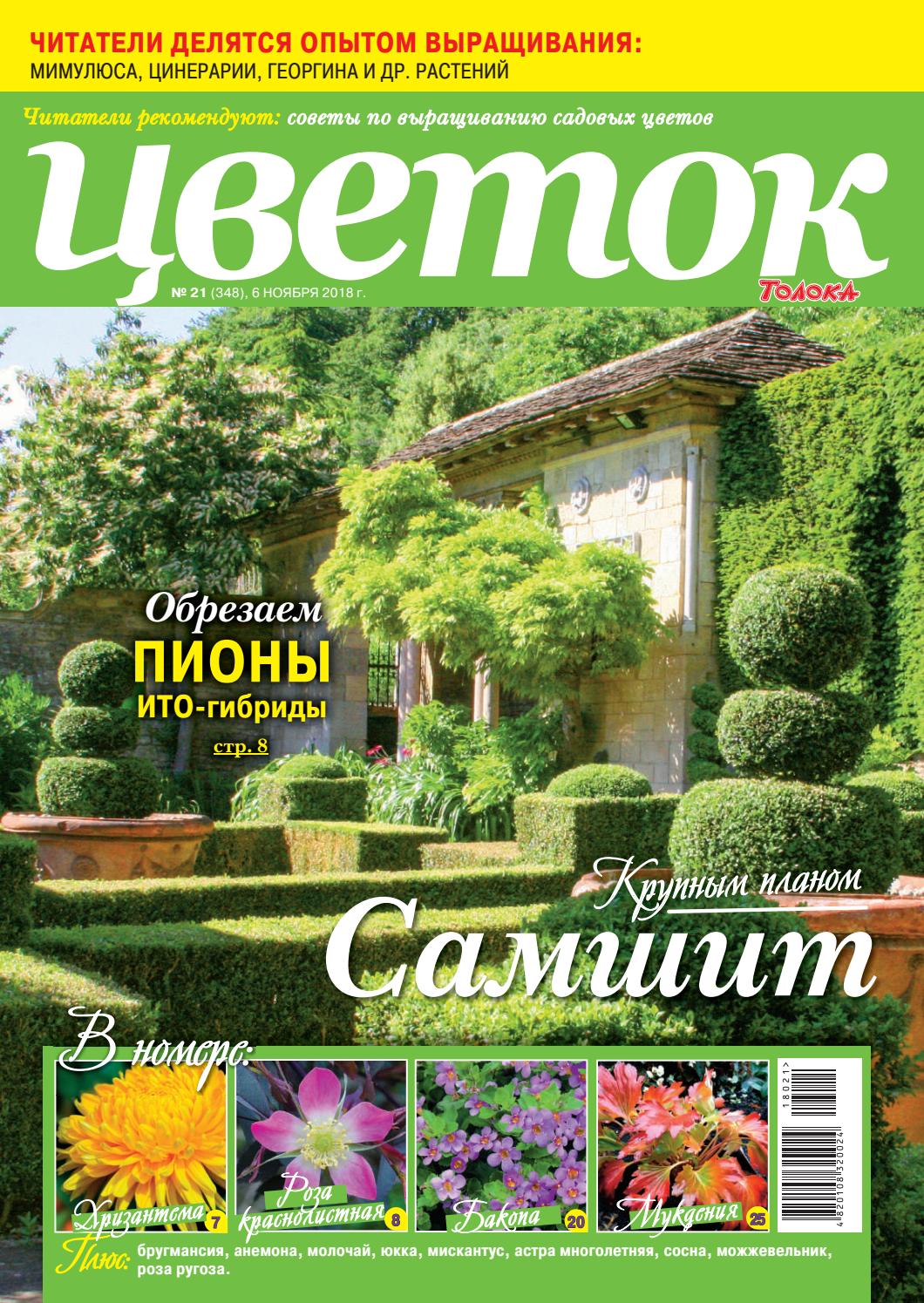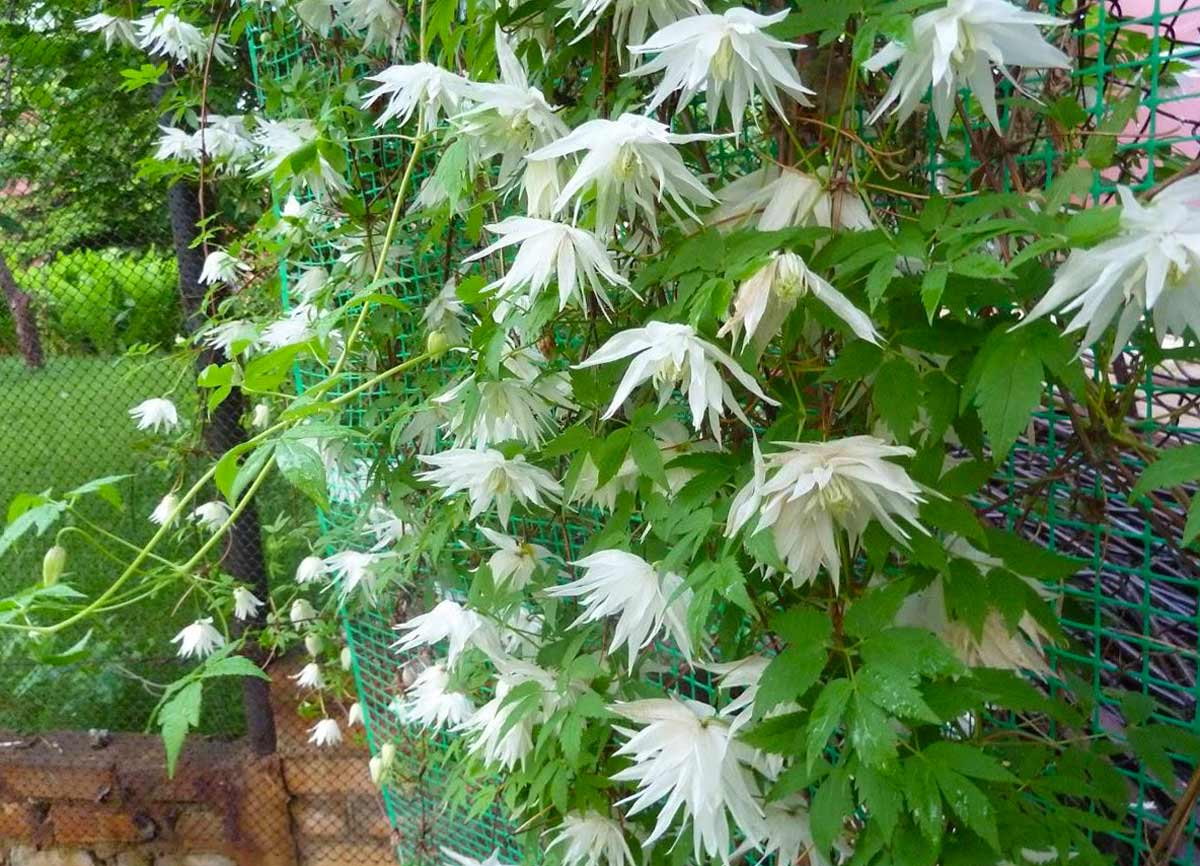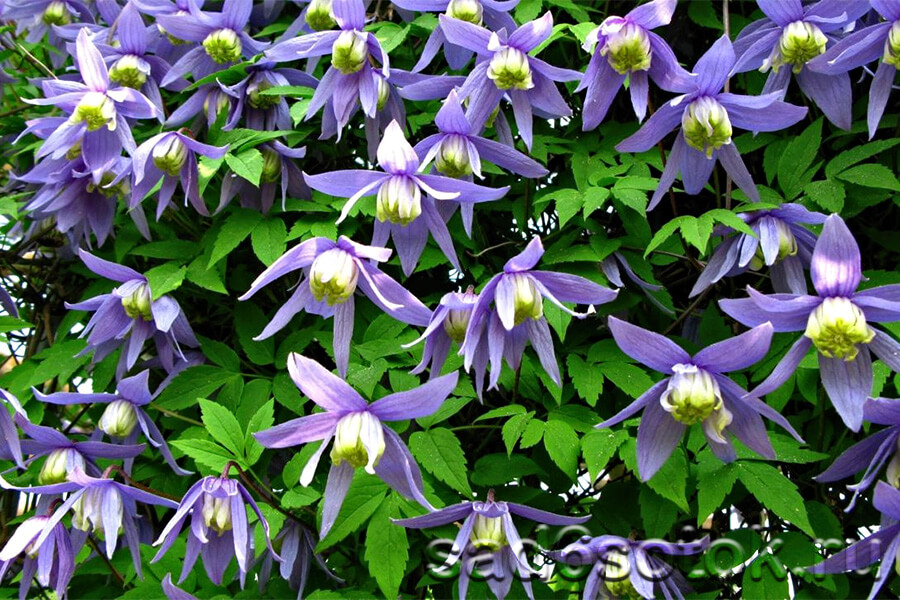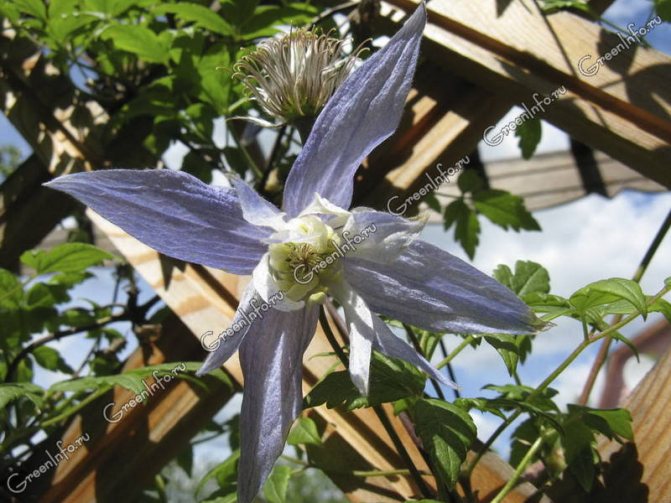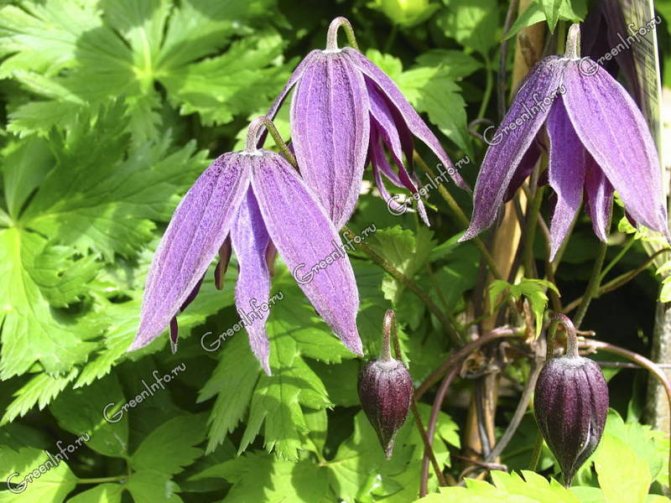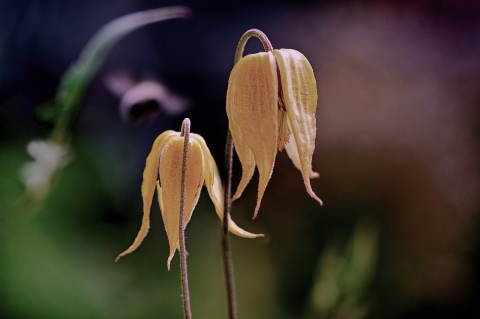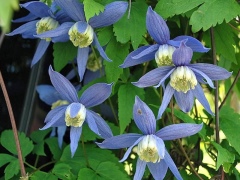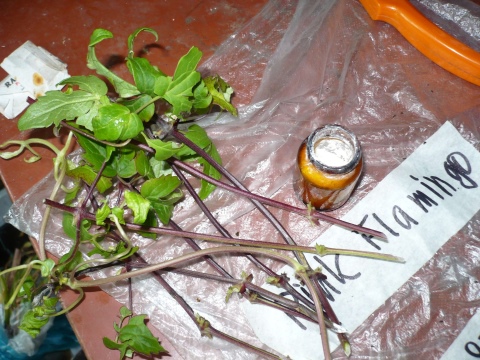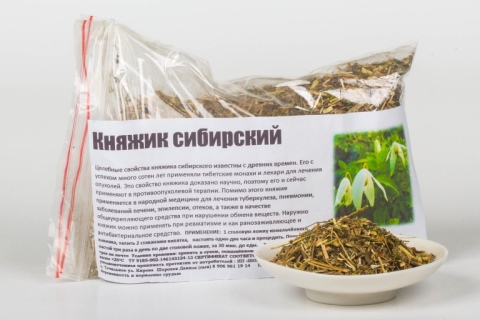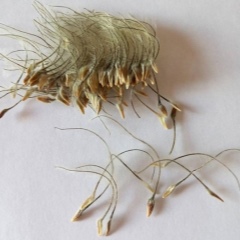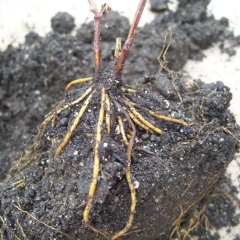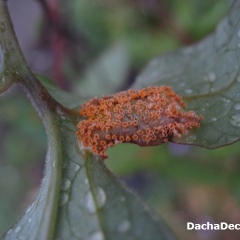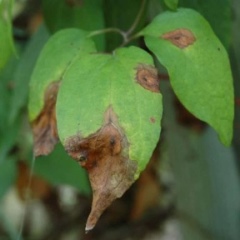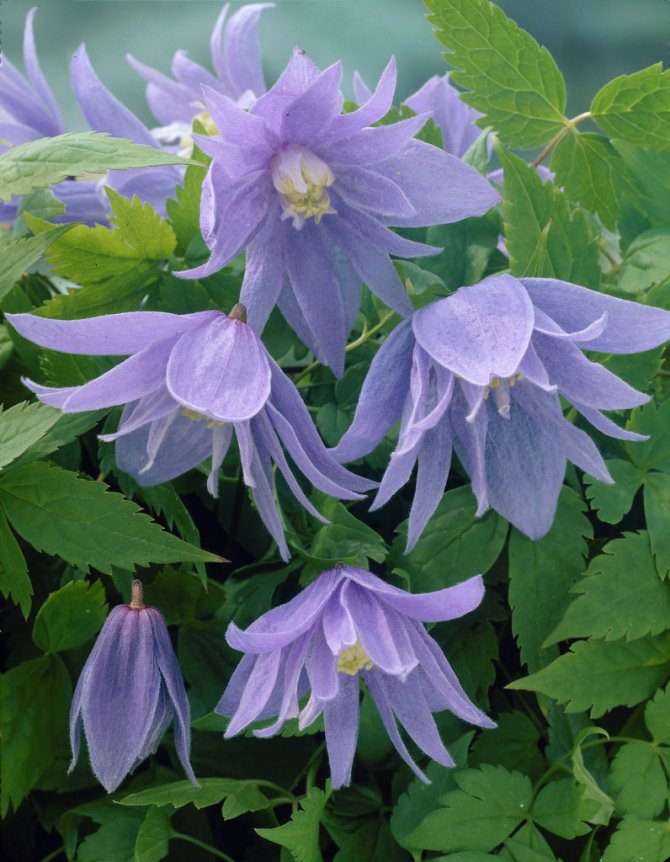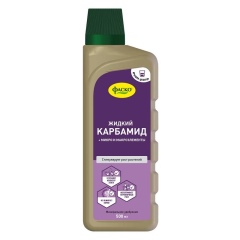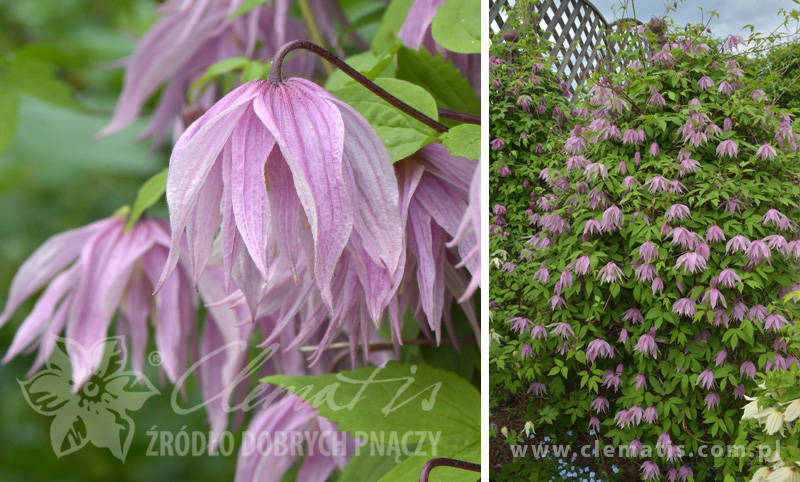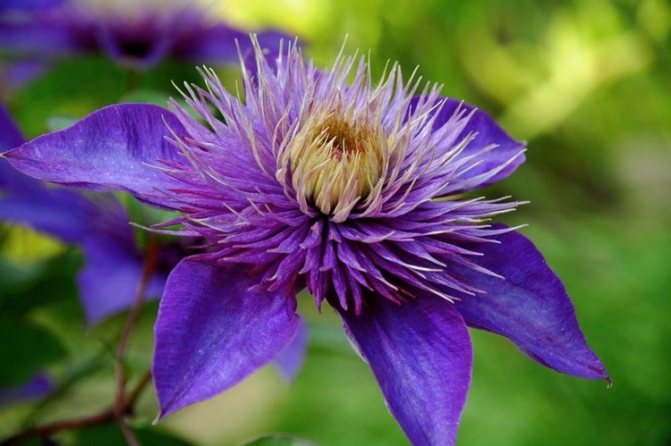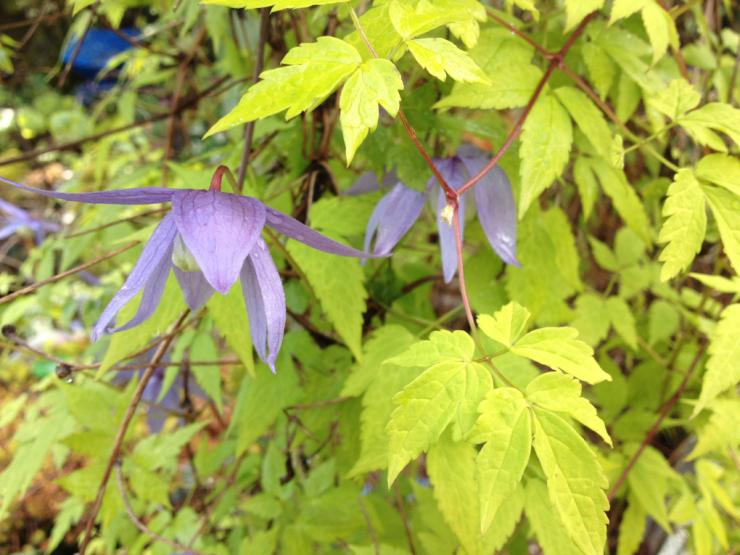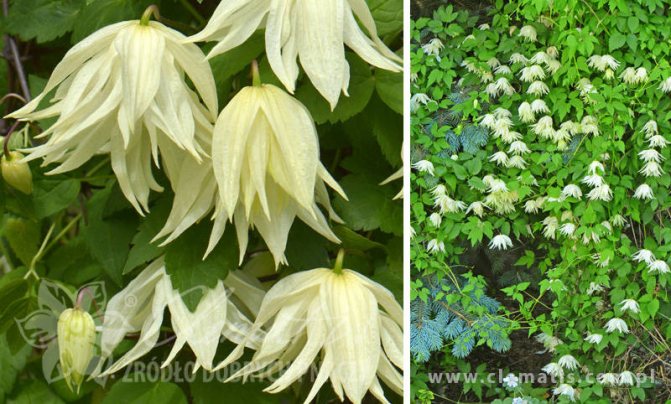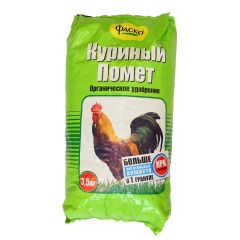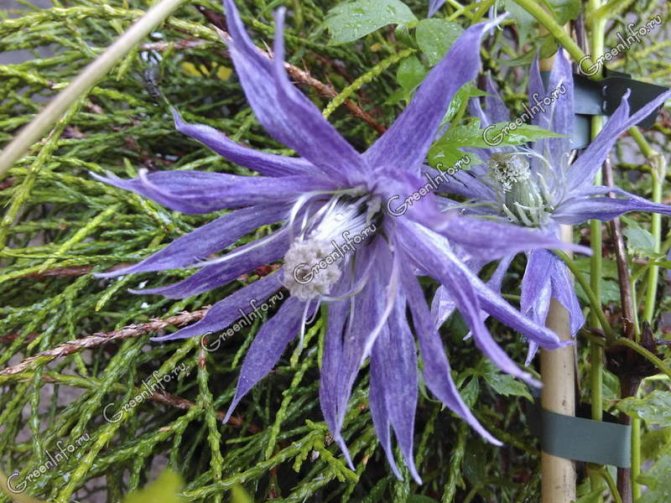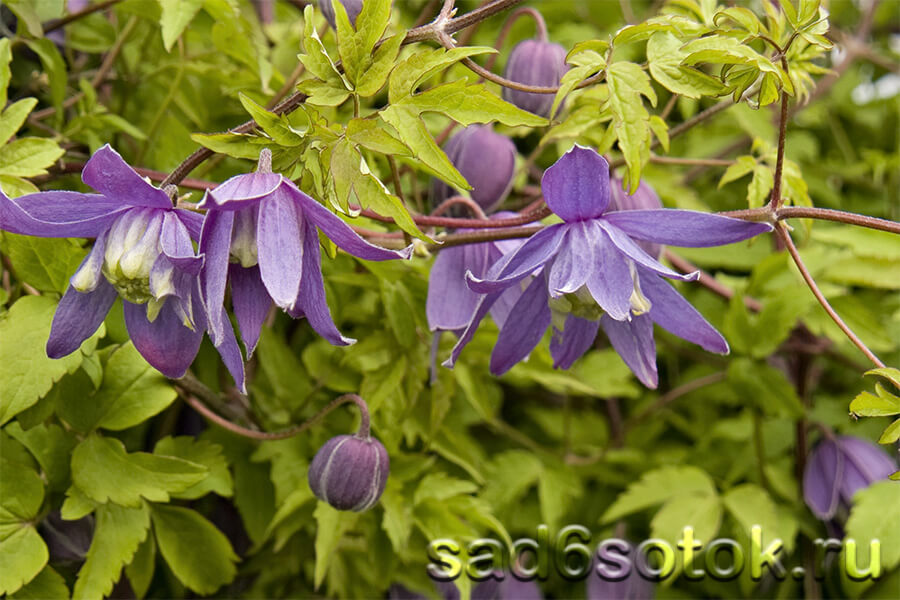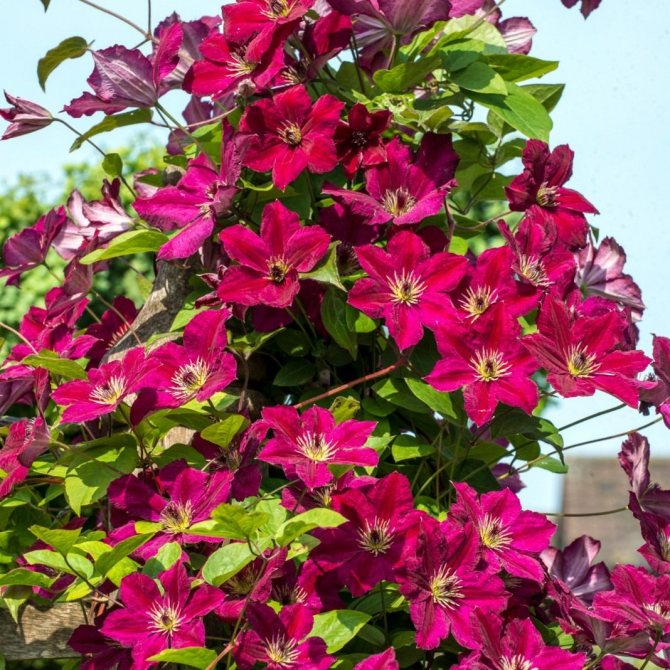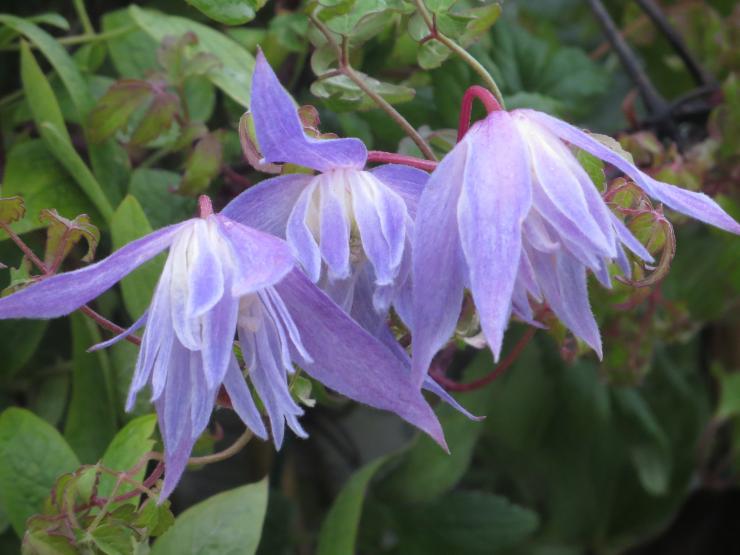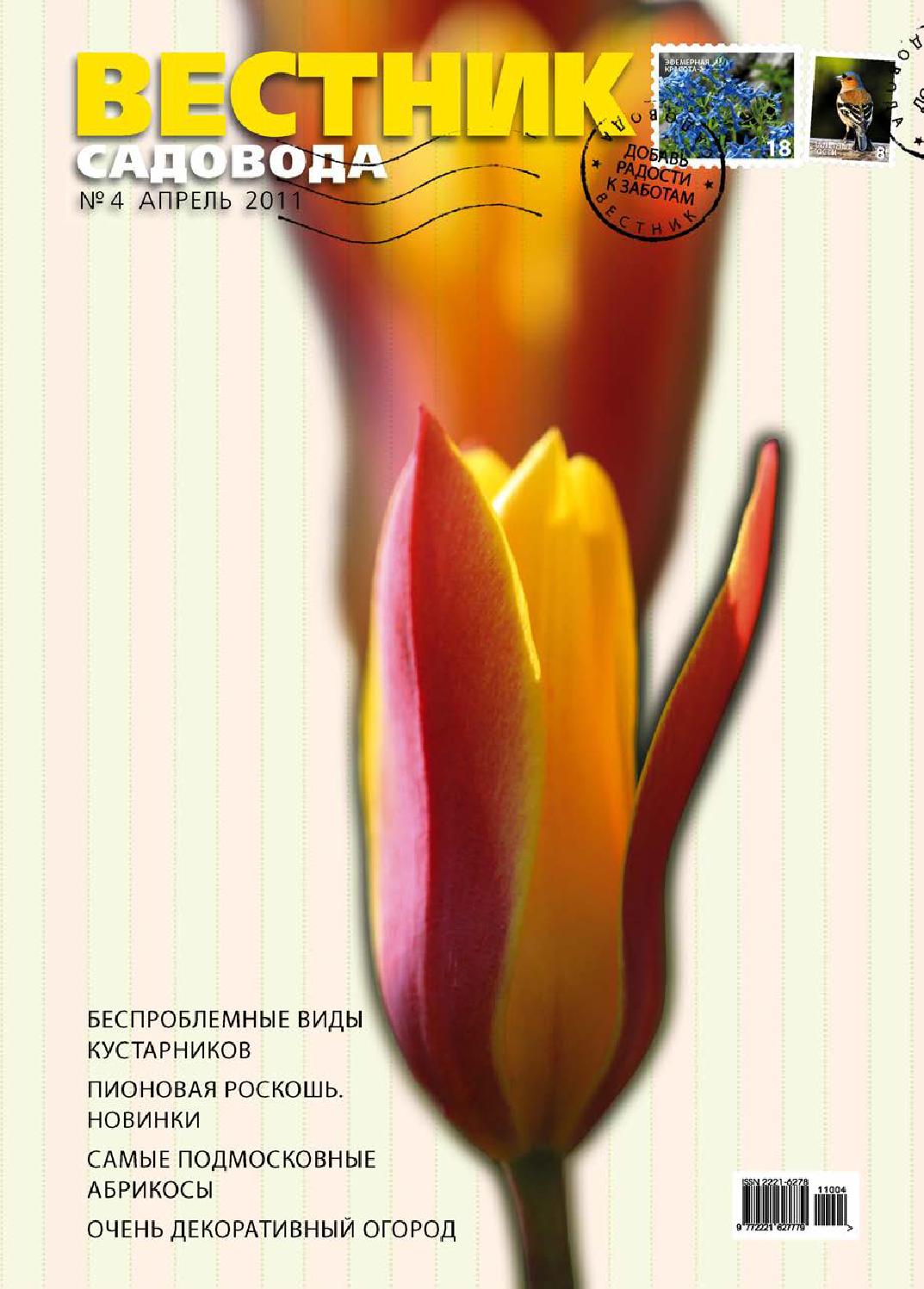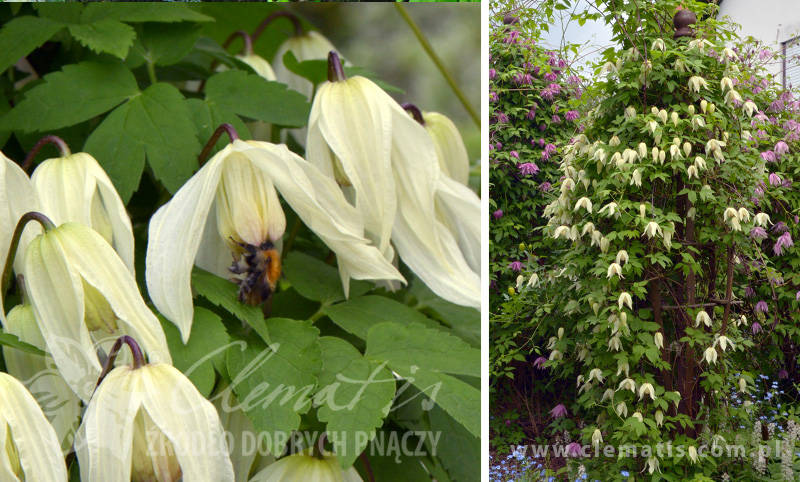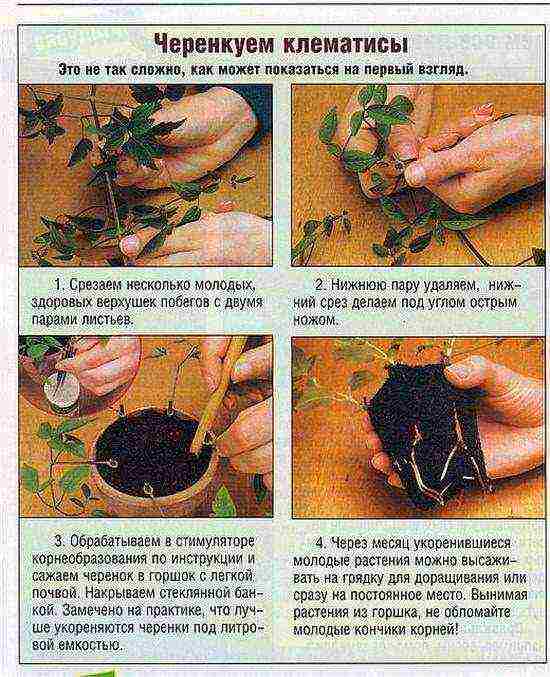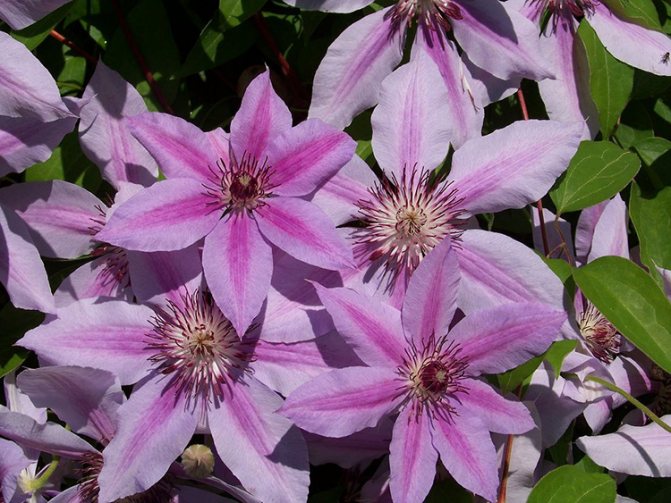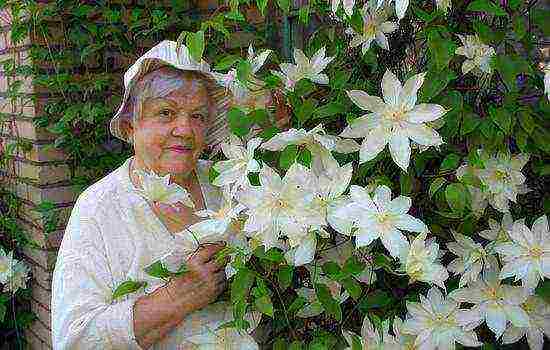Growing and care
Caring for princes in the open field is quite simple. Some features for choosing a landing site for princes:
- their flowering in a sunny place begins earlier, but lasts less;
- in partial shade, on the contrary, the flowers bloom later, but the flowering period itself increases;
- in the shade, the flowering is less abundant and lush, but it lasts even longer.
The princes are quite unpretentious and do not require much care from gardeners, unlike clematis. In the open field, they easily take root in sunny areas and slightly shaded areas. Their flowers have a delicate, vulnerable structure, like that of clematis, so it is recommended to protect the plant from strong winds. Beside them below, you can plant plants with a small root system to shade the lower zone. Planting flowers is possible in any soil, except for overly wet and swampy areas. Loose fertile or slightly alkaline is well suited.
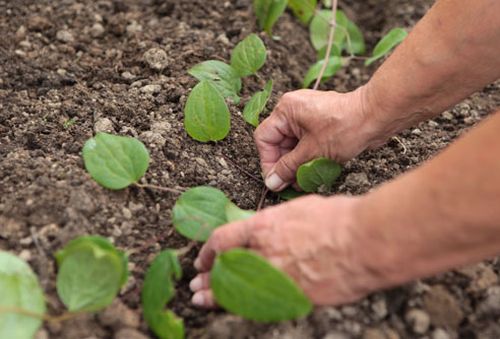
Water them in moderation, with the exception of the first year of life. At this time, in dry sunny weather, they need a lot of moisture. Their long roots, going deep underground, are able to extract moisture on their own. It is advisable to carry out regular fertilizing of flowers, especially at the beginning of growth in spring and before budding. This contributes to a more abundant and lush flowering, the leaves are filled with color and become more glossy. Although the princes can do without fertilizers for a very long time.

To rejuvenate the bush, you need to carry out periodic pruning every 5 years. After the plant has bloomed, the shoots are shortened to 70 centimeters. Do not forget to get rid of old dried leaves and stems of the vine and carry out periodic maintenance. They need support only at the beginning of development, adult plants themselves cling to trees, fences and gazebos.
Landing
Before deciding to plant such a plant, you need to study in detail not only the history and botanical description, but also the rules of planting and growing. After all, such a vine is hard to call an ordinary plant - a special approach is needed to the Siberian prince.
- The first step is to decide on the variety. Experienced gardeners say that the most preferred of all varieties of Siberian prince for growing at home is "Riga".
- It is worth choosing a landing site. The prince is not very whimsical to the place that will become his home. The plant feels great and grows both in the shade and in the sun. Of course, there are some nuances - if the plant is planted in a shaded place, its flowering period will last longer, and the buds themselves will be bright and saturated. But when exposed to direct sunlight, the flower will quickly fade.
- In a certain place for landing, you need to dig a hole, the width of which should be at least 60 centimeters. Its bottom must be covered with drainage - crushed stone and brick chips.
- Prepare the ground. The soil should be saturated with peat, humus, compost. Leaves and dry pine needles are great compost.
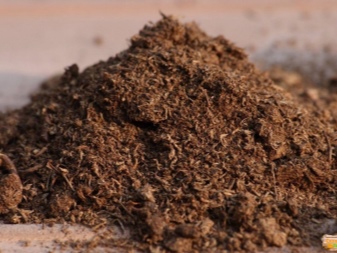
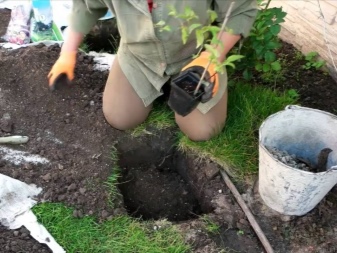
Here are some helpful tips to help you organize your footprint as correctly and intelligently as possible:
- during planting, be sure to observe the distance between seedlings, it should be 1-1.5 meters;
- if the soil is acidic, add lime to it, preferably slaked;
- the roots of the flower need to be buried into the ground by no more than 10 centimeters;
- for planting in open ground, it is advisable to use seedlings that are at least 2 years old;
- in order to prevent fungal diseases to which the root system of the prince is susceptible, you need to process the roots before planting, for which you can use manganese and ash.
{SOURCE}
Description of the garden plant
Knyazhik is a liana of a shrub species. She has woody stems and they are firmly attached to the vertical mountings. The plant grows up to 3 meters in height. The prince is very often confused with clematis, but unlike the latter, it differs in flowers that resemble bells in shape.
It is important to know that the prince is not a one-of-a-kind plant, it is a genus that includes different varieties. In the northern European and Siberian forests, you can find 8 types of prince
In the vastness of Russia, such species are mainly grown as: large-petal prince, Okhotsk and Siberian. From the varieties of the near and far abroad, florists grow the Alpine prince.
Just like clematis, the prince is afraid of the wind and does not feel well in direct sunlight, especially in the hot summer period. Basically, last year's shoots begin to bloom, and this process begins in the second half of May and lasts about a month. May bloom a second time at the end of August. After flowering, the bush is overgrown with seedlings. Does not recognize pruning, although it is highly frost-resistant, which makes it possible to leave vines on a support. The plant is not whimsical and can grow in any soil, however, it is better to choose a planting site with an optimal rather than a high level of moisture.

The prince belongs to the buttercup family, has odd-pinnate leaves. The flowers are about 10 centimeters in diameter, broadly bell-shaped with sepals similar to petals. The flower petals of the prince are small and almost invisible, below they are bordered by bright calyx leaves.
Although the prince is similar to clematis, it looks much more elegant. Abroad, in particular in Canada, breeding plants are even bred and distributed all over the world. Through the efforts of florists, new varieties have appeared for the Moscow region:
- Maidwell Hall - differs in a delicate lilac color, there are light blue and terry shades.
- Pink Flamingo - as you might guess from the name, it blooms pink, the first flowering period falls in April June, a month later it blooms again.
- Pamela Jackman - blooms with bluish-purple bells, is considered one of the tall varieties, liana can reach 3 meters.
- Willie - bells are more drooping than other representatives, white and pinkish shades prevail during flowering. The peak of flowering begins in May.
- Francis Reeves - a feature of this type of flower petals, it reaches 8 centimeters in length, which is somewhat larger than that of other princes. The flowers have a bluish tint.
- Estrella - refers to large-petaled princes, the height of this plant can reach 4 meters, the flowers have a calm light blue color.
- Memm - flowers have double corollas and are distinguished by a sparkling white tint.
- Rosie O'Grandy - pink flowers, somewhat reminiscent of the Pink Flamingo variety, but belong to the large-leaved princes.
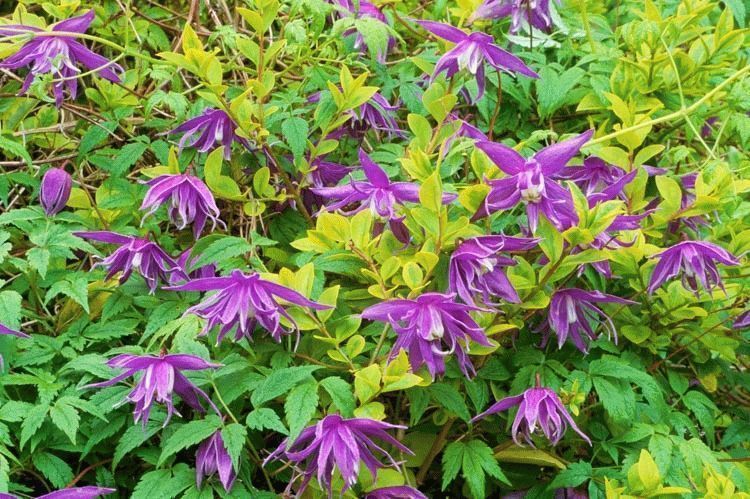
Main types
The breeding species presented above are, of course, actively used in landscape design, but do not forget about the main varieties of the prince:
- Alpine prince - mainly it can be found in forests and thickets on the banks of rivers. It is a 2-meter liana, which is attached to the support and hangs down with graceful garlands. The leaves are small, about 4 centimeters long. The flowers are both blue and purple, in shape they resemble a bell. The sepal is shaped like an ellipse, which is pointed at the end. The outer part is slightly lowered, and the petals are 2-3 times smaller than the sepals. Varieties of the Alpine prince are distinguished by white and pink flowers. The most common varieties are Flamingo, Willie, Jackman and Francis Reeves.
- Siberian prince - This plant can be found in forests and in the Chinese Tien Shan highlands. This prince is very fond of forest edges, rocks and thickets of coastal zones. This prince is not just a beautiful plant, but in the wild world it is considered an endangered species, therefore it is protected in reserves. It reaches a height of 3 meters. The flowers are large and represent a drooping white bell. But even when flowering ends, the bush does not lose its natural decorative appeal, since beautiful fruits appear on it.
- The large-petaled prince is the birthplace of this plant in the countries of the Far East and Siberia, where the plant has chosen the forest edges.Flowers are formed by combining 4 petals of blue-purple color. Such varieties as Memm, Estrella, Grandi, Hall were bred from this species.
- The prince of Okhotsk is the birthplace of this plant in Siberia, China and Primorye. The prince of this species can be found on forest glades and rocky slopes. The leaves of this plant are three-triplet, and the flowers look like a wide purple-blue bell. This species is considered the most decorative among all members of this family.
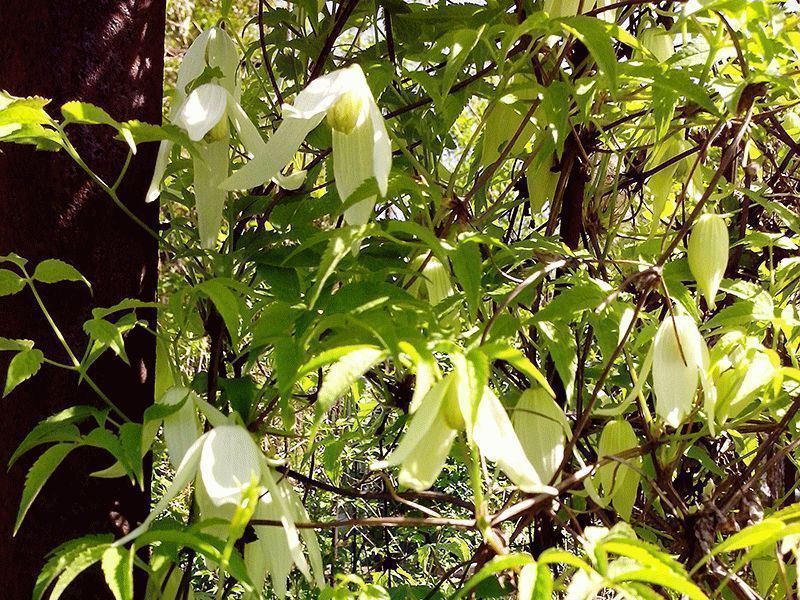
Landing rules
Knyazhik is a rather unpretentious plant and will not take much time. But, nevertheless, it is necessary to know some of the features of growing and care, and then the vine will delight all summer with amazing flowers.
Seat selection
The plant loves the sun, but it is better to plant it in partial shade. Flowers become smaller under the scorching rays.

- If you decide to plant a prince on your site, then take care of a place where there will be no drafts and sharp gusts of wind. Liana really doesn't like it.
- Some varieties should be planted on the south, southeast or southwest side to protect fragile twigs and flowers.
- There are varieties that perfectly tolerate cold winters and are absolutely not afraid of frost. You don't even need to cover them.
- Land for planting can be garden and humus.
- Be sure to think about supports or nets to which the vine will cling.
The soil
Since this is a rather unpretentious plant, it can grow on any land. Only marshy and moist soils can lead to rotting of the root system and poor development.
It is better to select the soil according to its composition, loamy, slightly alkaline, with a drainage layer under the roots. Also, try to keep the soil well loosened and allow moisture to pass through without difficulty.

Landing prince
Planting this vine is very similar to planting clematis columnar. The stages are the same, let's consider them in more detail.
- Landing holes are dug at a distance of about 40-50 cm from the support. Size - square pit 60/60/60 cm.
- At the bottom of the hole, 20 cm of a drainage layer of broken brick and gravel is poured.
- The soil is prepared independently: we choose humus, compost or manure - up to 8 kg, superphosphate - 50 g, wood ash 200 - 400 g. If the soil is sour, then add half a glass of slaked lime.
- First, pour a slide onto the drainage layer. We put a seedling on it and gently straighten the roots. Remember that the root system is very fragile and breaks down quickly, so any broken or damaged areas should be removed before planting. And treat the whole with a solution of potassium permanganate and sprinkle the slices with crushed activated carbon for disinfection.
- Then we fill in the rest of the soil. Water well, loosen and mulch so that moisture remains.
- A good time to plant seedlings in spring is in May or autumn (September).
- The distance between seedlings that grow rapidly should be at least 1 - 1.5 meters. If the varieties are undersized and little branching, then the distance between young shoots is up to 1 m.
- For planting, it is better to take biennial seedlings that have already grown stronger and will well tolerate the transplanting process.
- When planting, it is recommended to deepen the root collar by 10 - 13 cm for adult plants, for young plants - up to 10 cm, if the soil is heavy in composition - by 6 - 8 cm.
- A protective layer of river sand (1 bucket for each bush) and wood ash (250 g) is poured around the root collar. Then poured with a solution of potassium permanganate. This will protect the vine from various diseases, including fungal ones.
It happens that the first buds appear in the first year. Experienced flower growers recommend removing them so that the plant's strength goes to development and growth.
Major diseases
The princes are susceptible to some types of diseases, such as powdery mildew, rust, and spotting. In addition, it is necessary to remove various pests in time - snails and slugs. For protection from rodents, it is recommended to cover the flowers with spruce branches for the winter.Tip: Spraying the plant with karbofos will prevent the formation of a mealy worm.
Powdery mildew dominates all parts of the plant. Leaves and shoots affected by it begin to dry out. A characteristic feature is the formation of a white coating on them. All diseased shoots must be removed and burned to prevent further infection. Spraying with whey or aqueous solutions with the addition of ash, mustard powder, liquid soap and baking soda will help prevent the onset of the disease.
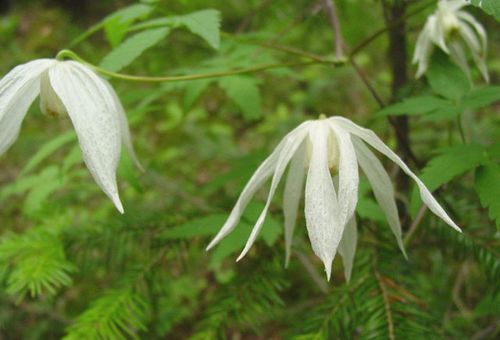
Rust overcomes all parts of the plant above the ground. This disease can be identified by the presence of swollen red spots. Control methods are the same as with powdery mildew. Spraying with a suspension of polycarbacin can be used.
Brown spotting usually begins with young shoots and leaves. The formation of brown spots threatens the death of the entire plant. It can also appear as white specks with a purple outline on fresh leaves. To prevent this disease, the plant is treated with a 0.1% solution of copper or iron sulfate.
Growing and care
Before you plant the prince, you need to decide on his place. The location of the prince should be chosen based on the characteristics of this plant. Although the prince is light-loving, he cannot stand the sun, under direct hot rays, especially in the sultry season, his leaves begin to shrink. So when choosing a landing site, you should give preference to a sunny, but relatively shaded place. For example, the eastern slope, the slope of which does not exceed 50 degrees. Also, the landing site should not be windy, as the flowers will quickly fly around. The plant is frost-resistant, therefore it can winter without covering.
As for the soil, the plant is not particularly whimsical and almost any soil will suit it. The main thing is that it is not swampy and has a high level of moisture. It is good if the earth is permeable and loose. Loamy, neutral or poorly cleaned soil is perfect for a prince.
The prince is propagated by means of seeds or cuttings. Seeds are planted only after stratification, which lasts 2 months. Otherwise, the germination time will take more than 240 days. If the seeds sprouted at the beginning of spring, then they can be planted in the beds already at the beginning of May. Only those pagons are planted that already have 6-8 leaves. If planted in beds, then they must be prepared in advance. What should be fertilized with?
For fertilization, a special mixture is prepared, which consists of sod land, humus, leafy earth, sand and peat (in the appropriate ratio: 2: 1: 1: 0.5: 0.5). Plants need to be planted at a distance of 3-4 centimeters from each other, there should be a distance of about 30 centimeters between the rows. The resulting seedlings are protected from sunlight and watered every 2-3 days. When six new leaves appear, the aisle needs to be loosened and rid of weeds. The grown seedlings are transplanted to a permanent place in late spring or early autumn, but only after the plant has survived one winter.
If it is not possible to grow a seedling yourself, you can purchase it. Many novice gardeners are faced with the question of how to choose a seedling. It is better to give preference to the one with a closed and undamaged root system. It is better to buy in the spring, as at this time it is customary to plant seedlings in open ground.
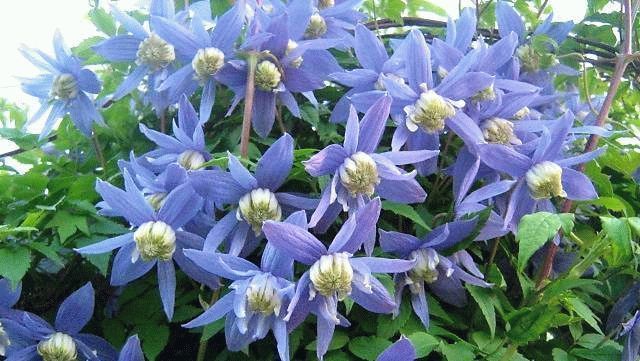
Initially, before planting, you need to dig a hole 60 centimeters deep, of the same diameter and width. Then humus and compost (6-7 kilograms), granular phosphate (50 grams) and 2.5 glasses of wood ash need to be added to the pit. For "acidic" soil, it is customary to add slaked lime (no more than 100 grams). To ensure drainage, broken brick or crushed stone can be placed at the bottom of the pit, the layer should be no higher than 14 centimeters.
If you do not have time to plant the prince in May, you can postpone this event to the beginning of September.Before planting, you need to carefully examine the seedling, cut off all broken roots, remove shoots that are located above the second bud
It is also important to remember that the distance between the plants planted in a permanent place should be more than 1.5 meters and it is better to plant seedlings that calmly tolerate planting in the garden or cuttings
How to take care of the prince? Watering is done every week or every 10 days. 3 days after water treatment, the soil is loosened to retain moisture. If the heat is very strong, then the plant is watered more often. They are fed once a month: the first feeding is done at the beginning of the ripening of buds and the appearance of new shoots, then only after the end of the flowering period
It is very important that the plant grows the way a certain landscape needs it to be attached to the support as soon as it gets stronger: the sooner the better
Diseases and pests for the prince are presented in the form:
- Powdery mildew. The plant becomes brown and dries up. Not only the aboveground part is affected, but also the root system. It is possible to determine whether a plant is infected by the presence of a white coating that looks like a cobweb. "Sick" leaves are cut off and burned, and the plant itself is processed.
- Brown spotting. Harms the leaves, spots of white or burgundy appear on them, and then turn into black dots.
- Rust. Harms all above-ground parts, forms red-yellow spots on them.
- Gall nematode. This root disease, its description is simple: the rhizome begins to grow overgrown with swellings.
- Slugs, snails, mealybug. Harmful to leaves, especially young ones.
- Mice and rats. They gnaw not only leaves, but shoots, roots and stems.
The application of recommendations regarding planting and caring for the prince will help to grow a beautiful garden plant that will not be damaged by diseases, and it will delight the eye for a long time.
Princes of unusual shades
From princes blooming in spring and early summer, we expect white, blue, lilac-pink shades, but not brown.
Indeed, princes alpine (C. alpina), Siberian (C. alpina ssp. Sibirica), large-petaled (C. macropetala) bloom with graceful flowers in a gentle spring range. However, there are also swarthy beauties with grayish and purple-brown flowers. Such vines, effectively located on white supports or against a light background of buildings, make a strong impression on the viewer.
The prince Fori (C. faurei) is similar in habit to common species - it is a liana with woody stems, they cling to the support with petioles of carved leaves, rising to a height of about 2.5 m.It blooms from mid-late May for more than a month. The flowers are bell-shaped, their petals are dark brown, with a slight silvery pubescence. Completely winter-hardy, stable and durable in our climate and, thanks to the unusual color of the flowers, is extremely effective. The variety 'Brunette', obtained with the participation of the prince Fori, has larger and wider open flowers, a purple hue is clearly felt in the brown tone of the petals.
Brown clematis (C. fusca), unlike the previous ones, blooms in mid-summer. This herbaceous liana does not retain lashes for the winter, so they can be cut off in the fall. In spring it wakes up early and grows rapidly, throwing out 1.5–2 m long shoots during the season. Flowers are medium-sized, dark brown, on shaggy stems. Densely pubescent round buds are very good. It has many varieties, differing, in particular, in the length of the shoots and the size of the flowers.
In nature, there are specimens of the Korean prince (C. koreana) with dull purple and light brown flowers, with lighter edges of the petals. Bell-shaped flowers, like brown clematis, look down, while they are larger, and the petals are separated. But the thickness and density of the petals are the same. This is undoubtedly the advantage of these species - the flowers look like they are made of porcelain. Shoots rise to a height of about 2 m, hibernate on a support. Blooms in May and June, some flowers bloom until autumn.All of them are interesting after flowering, when the liana is decorated with fluffy seed heads.
Application of the prince
Princes can beautifully frame a fence, balcony or staircase. They can decorate any wall. A gazebo or tree decorated with flowers will emphasize the originality of any garden.
This climbing crop takes up very little space in the garden, so it can be planted instead of trees or shrubs. Its bushy shoots and leaves and gorgeous colorful flowers can protect from bright light and dust while shading the area well.
This flower is best planted next to an arch or veranda, taking into account that it is a climbing culture. As it grows, it will wrap around nearby objects
In one place, a culture can grow up to 10 years. Poorly tolerates transplantation due to the fragility of the root system.
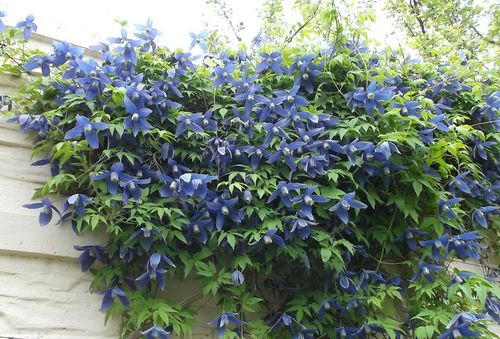
The medicinal properties of the prince are widely known. Various tinctures are made from this plant, which serve as a general tonic for the body.
These noble flowers can decorate both the garden and the walls of any home, if you provide them with the necessary space and all the conditions for growth. Planting and caring for the plant will give a lot of pleasure to true lovers of these flowers. The prince and clematis complement each other well. Thanks to the princes, the flowering of the northern garden is extended for half a month. These flowers are very decorative not only during flowering, but also during budding.


